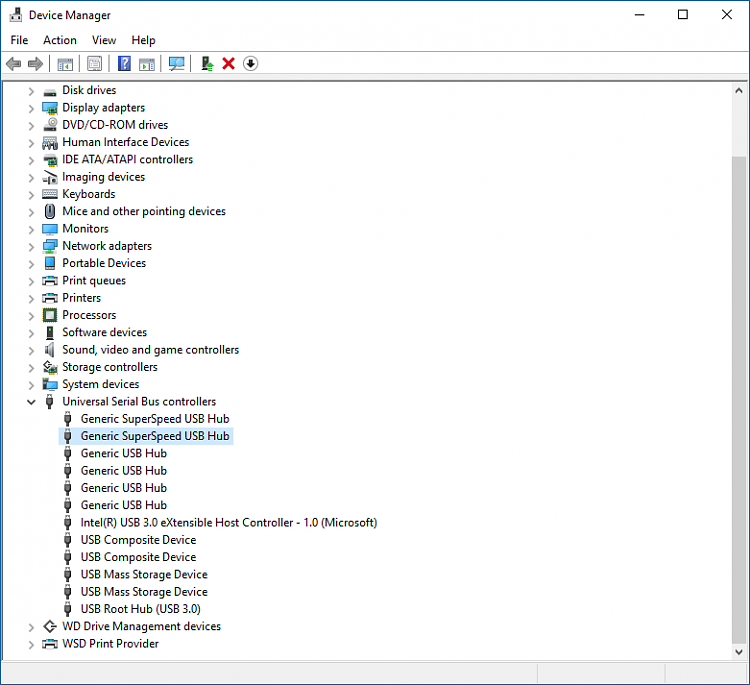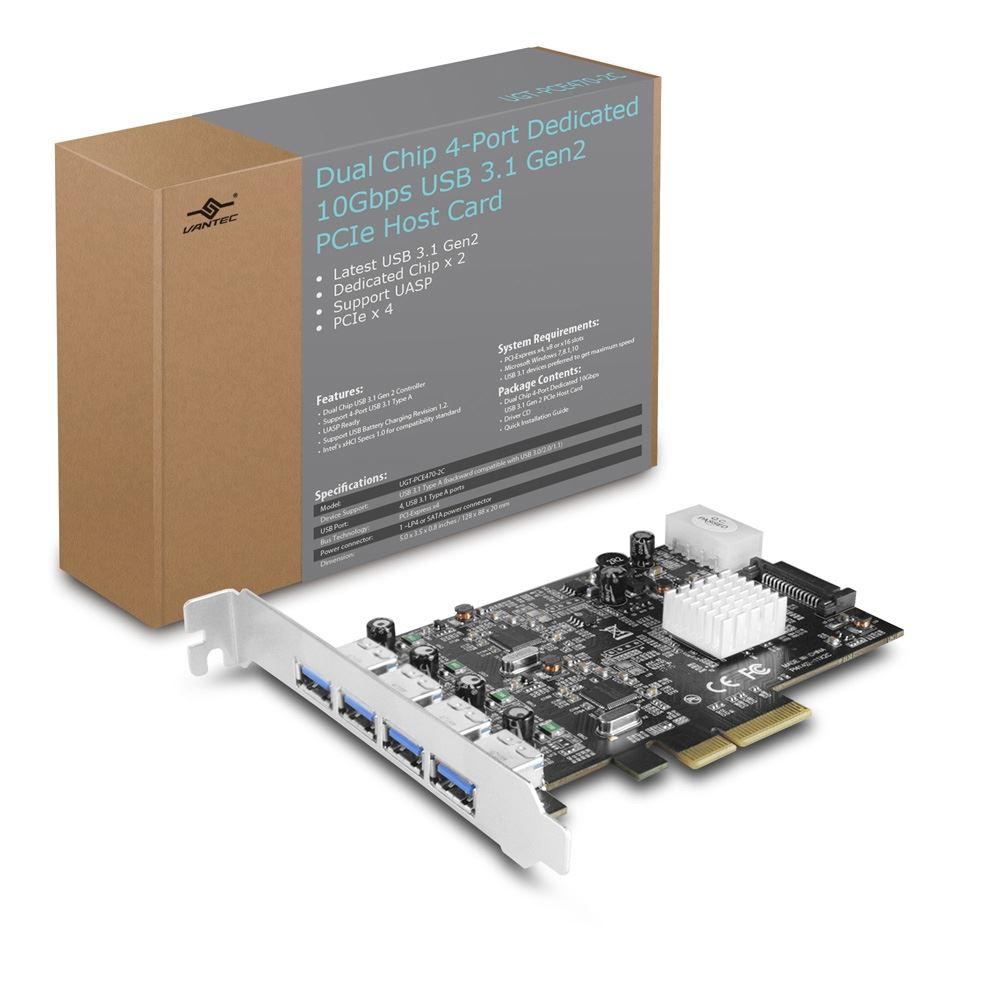Re: 'USB-IF xHCI USB Host Controller intel WiUSB driver not working Jump to solution sindhu,there is a driver update in intel website,go to intel driver update utility->there is an option to scan your computer click that->you will need to download some plugins->theres a 248mb driver download under wireless display->download that and install it.
Update 3/5/2015: See our related post: Windows 8.1 and the ASMedia USB 3.1 XHCI 1.1 Host Controller
Important Notice: As of Windows 8.1, we don’t recommend replacing the in-box Windows USB 3.0 stack with the Intel Windows 7 stack, as described in this post. This post is being kept for historical background, but we recommend working with your computer manufacturer and/or Microsoft on any remaining issues with the built-in Windows 8.1 USB 3.0 stack. Feel free to also comment below if problems remain but Plugable cannot offer technical support or take any responsibility for any issues this process may cause to your computer. Continue at your own risk.
One of the new features of Windows 8 is the built in XHCI host controller software and USB stack. While this brings some benefits like UASP support, there are some devices that currently don’t work with the Microsoft stack on the Intel USB 3.0 host controller. This can be fixed by forcing Windows to use the Intel USB 3.0 host controller drivers instead of the built in stack.
*NOTE* These instructions are only for machines with an Intel eXtensible Host Controller. Look for the Intel(R) USB 3.0 eXtensible Host Controller under Universal Serial Bus controllers in Device Manager.
First, download the latest driver package from Intel. It’s currently at version 1.0.6.245 and can be downloaded from the following link:
Intel(R)_USB_3.0_eXtensible_Host_Controller_Driver rev. 1.0.6.245
Once the download has finished, extract the .zip file to a known location.
Now download these two .inf files which have been modified to allow the Intel driver to install on Windows 8:
iusb3hub.infiusb3xhc.inf
We are going to replace the existing versions of these two files with the ones we just downloaded. Place the files in the following directory of the unzipped driver package and click yes when Windows warns that we are over writing a file with the same name:
Intel(R)_USB_3.0_eXtensible_Host_Controller_DriverDriversWin7x64
This will update these two infs with the modified versions that will allow the Intel driver to install on Windows 8 when the Host Controller and USB hub drivers are updated.
To install the Intel drivers in place of the in box XHCI stack, we’ll have to temporarily disable Driver Signing Enforcement. To do this press the Windows key + R and in the run box type:
shutdown.exe /r /o /f /t 00
Now make the following selections to boot into the Start Up Setting Screen
Troubleshoot — Advanced options — Start Up Settings — Restart
Then, when the machine restarts, select “Disable driver signature enforcement”. Your machine will start with Driver signing enforcement disabled until the next reboot.
When the machine restarts, open Device Manager (win + r, devmgmt.msc). Double click on the entry for the Intel(R) USB 3.0 eXtensible Host Controller and select the Drivers tab. You should see that the driver provider is Microsoft.
Now click “Update Driver” and then select “Browse my computer for driver software”.
Next choose “Let me pick from a list of device drivers on my computer”.
Next, select “Have Disk”.
In the Window that pops up titled “Install From Disk” choose “Browse” and navigate to the location where we replace the original infs with the two modified .inf files we downloaded earlier. Select iusb3xhc.inf and click ok.
Windows will warn that the driver is not signed and will require you to confirm the installation.
Once the installation is complete, reboot the machine following the same procedure as above:
shutdown.exe /r /o /f /t 00
Now make the following selections to boot into the Start Up Setting Screen
Troubleshoot — Advanced options — Start Up Settings — Restart
When the machine starts, select “Disable driver signature enforcement”. Your machine will start with Driver signing enforcement disabled until the next reboot. Once logged in, open Device Manager (win + r “devmgmt.msc”) and locate the entry under Other devices for an Unknown device, to find the correct one, double click on the entry for the unknown device view the details tab. Make sure it has the VID_8086.
Once you have located the correct device right click on it and choose “Update Driver” Choose “Browse my computer”, Windows will ask you to identify the type of device, scroll down and select “Universal Serial Bus Devices”.
Click next, choose “Have Disk”, “Browse” and select the modified iusb3hub.inf that we placed in the Intel(R)_USB_3.0_eXtensible_Host_Controller_DriverDriversWin7x64 folder earlier and click ok.
Again, Windows will warn about driver signing, when the install is finished, reboot your machine.
When it restarts look at the driver tab for the Intel(R) USB 3.0 eXtensible Host Controller and the Intel(R) USB 3.0 Root Hub to confirm that you are now running the Intel drivers.
To return to the built in Microsoft USB 3.0 driver stack, use the uninstall drivers button from the driver tab in device manager. When it’s finished, select the Action menu of Device Manager and “scan for hardware changes” Windows should find the Intel USB 3.0 host controller and re-install it using the built in Microsoft XHCI stack.
Thanks to Ekko for his original work on this. Please comment below if you have any corrections or refinements. We’d also love to have comments mentioning the problems you were having, and whether the Intel stack solved them for you. Thanks!
Related
There are various problems with USB. The most common case is that when you find there are any port plugging in computer with the USB controller, even if you want to run the troubleshooter to fix the USB issue, you are prompted that the USB Controller is in a failed state or is not currently installed.
Contents:
The USB Controller IS In a Failed State Overview
Of course, some of you may have experienced the issue that Windows cannot load the device driver for USB controller for it may be corrupted or missing. Others are distracted by the USB issue that USB devices are not working.
As for the reasons why USB issues happened to you, to a large extent, it may be due to the USB interruption. So this is also why your USB controller is missing in device manager.
How to Fix The USB Controller IS In a Failed State Issue
On the basis of the fact, here offered some ways to help you fix the USB controller is in a failed state or is not currently installed which is always accompanied by the USB device code 10 error the device cannot start. You are able to solve the USB failure if you can refer to this post earnestly.
Solutions:
Solution 1: Show Hidden Devices
In the first place, you are supposed to check if the USB controller is showing with a yellow exclamation in device manager. That is what show all the hidden devices do for you.

1: Go to Device Manager.
2: Tap View which is on the top of the window.
3: Choose Show Hidden Device. Then all the devices will show up and you can see if there is a yellow exclamation of the USB controller.
If you have found that there is a yellow exclamation under the USB controller, you must go ahead for further solutions to tackle with the USB controller is in a failed state issue.
Related: USB Ports Not Working on Windows 10
Solution 2: Uninstall and Reinstall USB Controller Driver
If there is a yellow exclamation under USB controller, you are required to uninstall and then reinstall the USB driver to help fix the unknown device or not recognized USB device issues.
1: In Device Manager, Locate and expand Universal Serial Bus Controller.
Here you may need to scroll down to find Universal Serial Bus Controller.
3: Right-click all the USB Controller driver one by one and choose to Uninstall them.
4: Restart your computer. Then Windows 10 will automatically reinstall the USB driver for you.
After that, you can see the USB controller is not only showing up in device manager but also working well on Windows 10.
Do I Need This Ti Usb 3 Controller Driver Windows 10
Solution 3: Update USB Controller Driver
As mentioned above, you must know the issue that USB controller is not currently installed or cannot show up in device manager may be caused by driver compatibility problem. So here comes a convenient way to update the USB controller driver to make it be compatible with Windows 10. Thus, this way is also one of the ways to fix the USB error.

It is using Driver Booster, the professional and safe driver tool for Windows 10. You can count on it in two part, for the first thing, it can help you download and install the USB driver in several clicks and you just need to click two buttons, all the process can be done easily.
For another thing, Driver Booster can detect all the missing, corrupted or even damaged drivers, so it is no doubt that you can use it to fix the USB controller not working or failed to install issue.
1. Download, install and run Driver Booster on your computer.
2. Click Scan. Then you can see that Driver Booster is searching for your computer.
Then you can know how many drivers are missing or corrupted, including USB driver.
3. Update Now. You can choose to download all the drivers need to be updated with one click.
Do I Need This Ti Usb 3 Controller Driver Download
Once you have finished updating USB controller driver automatically by Driver Booster, you may find that the USB is installed correctly and can work as normal.
Do I Need This Ti Usb 3 Controller Driver Windows 7
In a word, as for the error that the USB controller is in a failed state or is not currently installed, you can resolve it without wasting much energy or time if you can obey the solution shown to you.
Do I Need This Ti Usb 3 Controller Driver Free
More Articles: